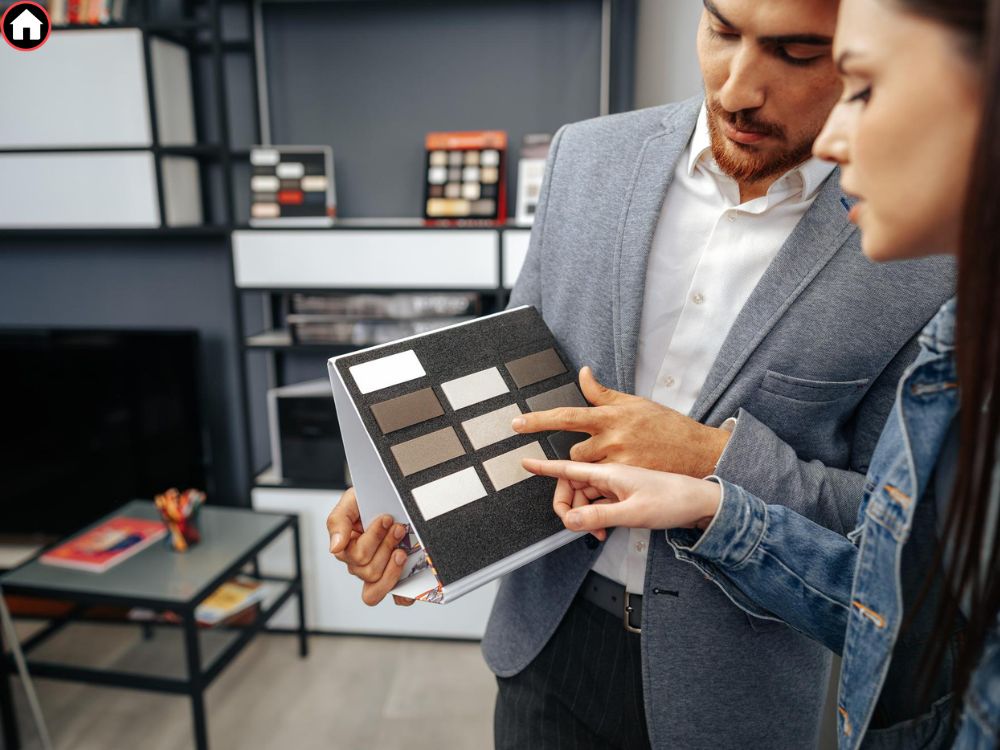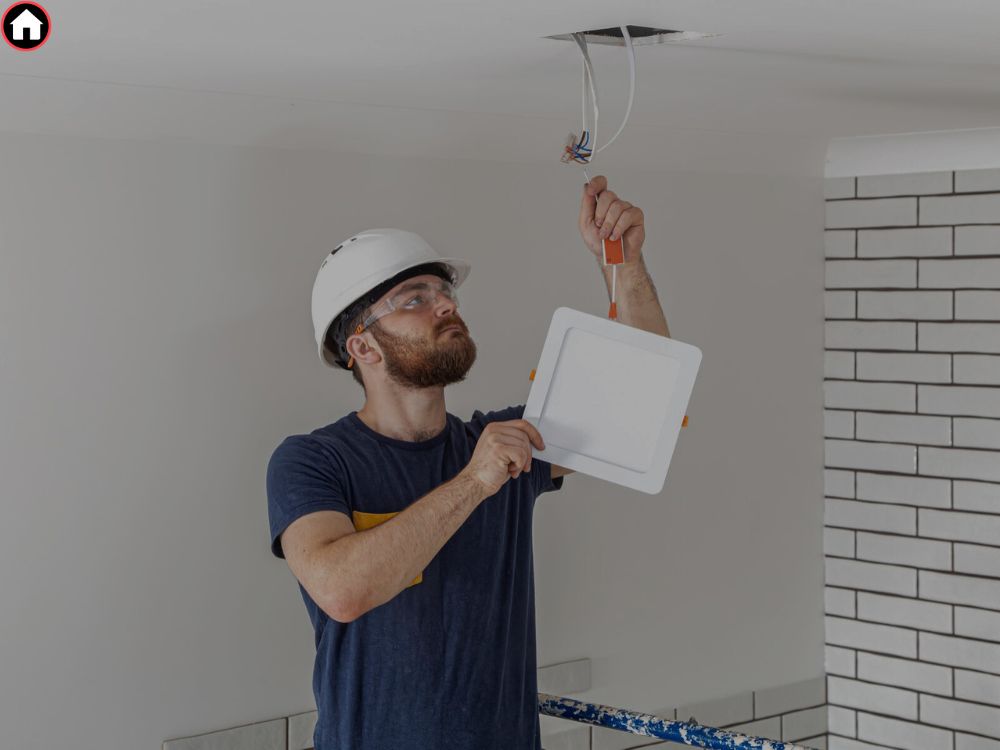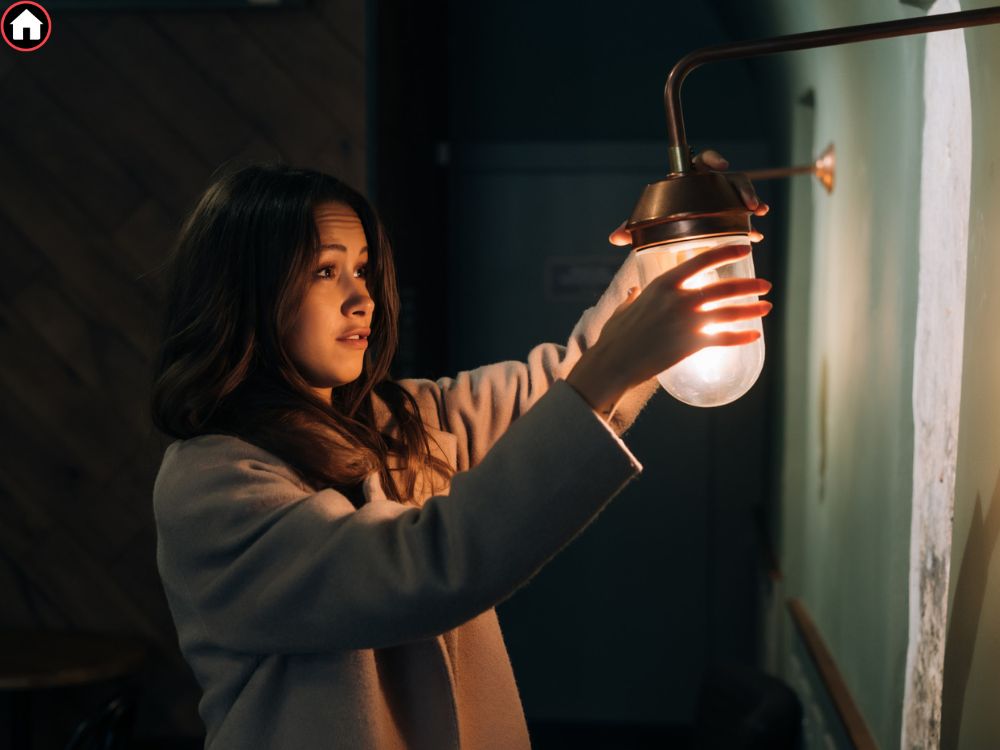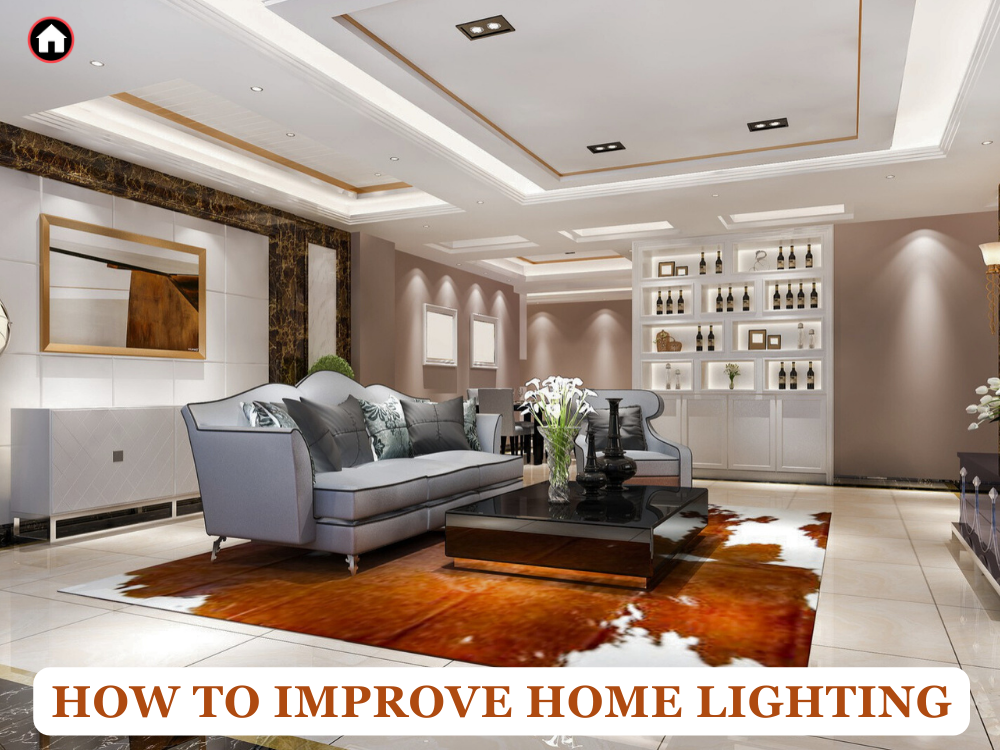I. Introduction
A well-lit living room can really improve home lighting for the living room and transform your home, creating a cozy and inviting atmosphere that is perfect for relaxation and entertaining.
In the world of interior design, few elements are as transformative as knowing How to Improve Home Lighting for Living Room. It has the power to shape not only the aesthetics of your living room but also the mood and functionality of the space. In this comprehensive guide, we’ll walk you through the art and science of home lighting in detail to help you master the art of perfecting home lighting for the living room. From understanding the basic roles of lighting to selecting the right fixtures, we will cover everything to ensure that your living room is infused with warmth and charm through better home lighting for the living room.
II. Understanding the Basics of Home Lighting
A. The Role of Lighting
Before diving into the details, let’s understand why lighting is crucial for your living room.
Lighting plays an irreplaceable role in the heart of your home – the living room. Beyond its utilitarian function, lighting can affect the very essence of this space, influencing mood, ambiance, and functionality. Imagine your living room as a canvas, and lighting as the brush that paints the emotions. It can create a cozy cocoon for a night of movies, a vibrant and lively space for entertaining friends, or a serene sanctuary for a quiet evening with a book.
Different types of lighting contribute uniquely to these experiences. Ambient lighting offers a gentle, even illumination that sets the stage for everyday activities. Task lighting provides targeted brightness for specific tasks, like reading or working on a puzzle. Accent lighting, on the other hand, adds drama and highlights the room’s most captivating features, whether it’s a cherished piece of art or architectural details.
By mastering the art of lighting, you’re not just illuminating your living room; you’re crafting its character and setting the stage for unforgettable moments.
B. Assessing Your Current Lighting
To make improvements, it’s essential to evaluate your existing lighting setup.
To embark on your journey toward a perfectly lit living room, it’s crucial to start from where you are. Take a moment to conduct a thorough lighting audit in your living space. Grab a notebook, walk around, and observe how light interacts with every nook and cranny. Pay attention to the fixtures you have, their positions, and the quality of light they cast.
Identify areas where the lighting falls short. Are there dark corners that seem to swallow up the light? Are there places where harsh glare disrupts the cozy atmosphere? These observations are your roadmap to improvement. Understanding the current state of your lighting will help you make informed decisions as you begin to enhance your living room’s illumination.
As you assess your existing lighting, remember that the focus keyword, “How to improve home lighting for living room,” should guide your actions. You’re not just scrutinizing; you’re paving the way for positive changes.
You may also like: How to Choose the Right Color Palette For Your Home
III. Choosing the Right Light Fixtures

A. Selecting the Ideal Fixture Types
Picking the right light fixtures can significantly enhance your living room’s ambiance.
The heart of any successful lighting scheme lies in the fixtures you choose. We’ll guide you through the various fixture types available, from elegant chandeliers to versatile pendants, from the warmth of table lamps to the versatility of floor lamps, and the character of wall sconces. Additionally, we’ll delve into considerations of fixture size and style to ensure they complement your living room’s aesthetic.
B. Maximizing Natural Light
Don’t forget the power of natural light in your living room.
While artificial lighting is crucial, let’s not overlook the beauty of natural light. We’ll explore how you can harness the sunlight’s natural brilliance to illuminate your living room. Learn how to use window treatments effectively to control the influx of natural light and discover the art of arranging furniture to maximize those precious rays.
You may also like: 10 Creative Home Office Ideas For Small Spaces That Will Amaze You!
IV. Layering Your Lighting for Balance

A. The Three Layers of Lighting
Achieving balanced lighting involves using multiple layers.
Creating a harmonious living room involves mastering the art of light layering. We’ll introduce you to the concept of three core lighting layers: ambient, task, and accent lighting. Understand how each layer contributes to the overall ambiance, making your living room functional and visually captivating.
B. Ambient Lighting
Ambient lighting forms the foundation of your living room’s lighting scheme.
Ambient lighting, often known as general lighting, sets the stage for your living room. We’ll explore the different sources of ambient light, from overhead fixtures to the subtlety of recessed lighting. Discover how to strike the perfect balance in ambient light levels, ensuring your living room is a comfortable and inviting space for all occasions.
C. Task Lighting
Task lighting is essential for specific activities in the living room.
In your living room, specific tasks require dedicated lighting. We’ll help you identify these task areas: a cozy reading nook or a well-lit workspace. Learn how to select the right task lighting fixtures, such as adjustable desk lamps and elegant floor lamps, to enhance productivity and comfort.
D. Accent Lighting
Accent lighting adds depth and visual interest to your living room.
To add depth and visual interest to your living room, accent lighting comes into play. Discover how to use accent lighting to showcase artwork, décor, or architectural features. We’ll guide you on employing wall sconces and spotlights effectively, allowing your living room’s unique features to shine.
You may also like: 18 Ingenious Cheap and Easy Home Décor Ideas For Home
V. Playing with Light Temperature and Color

A. Understanding Light Color Temperature
The color of light can have a significant impact on the atmosphere of your living room.
Light isn’t just about brightness; it’s also about warmth. We’ll delve into the concept of light color temperature, explaining the difference between warm and cool lighting. Gain insights into how to choose the right color temperature for different areas within your living room, creating the desired mood.
B. Smart Lighting Solutions
In the digital age, smart lighting technology offers new possibilities for controlling and enhancing your living room lighting.
Embrace the future of lighting with smart technology. We’ll introduce you to smart bulbs, dimmers, and lighting control systems. Explore the benefits of smart lighting, from convenience and energy efficiency to the endless possibilities it brings to customize your living room’s lighting experience.
VI. Practical Tips for Installation and Placement

A. DIY vs. Professional Installation
When it comes to installing new fixtures, decide whether to go the DIY route or hire a professional.
As you embark on your mission to elevate your living room’s lighting, you’ll inevitably face a choice: DIY installation or professional assistance. This decision carries significant weight, as it impacts the safety, functionality, and aesthetics of your lighting.
The DIY route offers a sense of accomplishment and potential cost savings. If you have experience with electrical work and feel confident handling tools, you may opt to install fixtures yourself. Many lighting fixtures come with installation instructions, and there are countless online tutorials to guide you. However, remember that the complexity of the task should match your skill level. Simple tasks like changing bulbs or installing a plug-in lamp are suitable for DIY, but more intricate installations may require expert help.
Professional installation, on the other hand, ensures that your lighting fixtures are installed correctly and safely. Electricians and lighting experts possess the knowledge and experience to handle complex installations, such as wiring new fixtures or integrating smart lighting systems. They can also provide insights into optimal fixture placement for the best lighting results.
When deciding between DIY and professional installation, keep your focus keyword, “How to improve home lighting for living room,” in mind. Your goal is to achieve the best possible outcome for your living room, and this may involve seeking professional assistance for more intricate tasks.
B. Proper Fixture Placement
The placement of your fixtures is as crucial as their selection.
Choosing the right lighting fixtures is only part of the equation; where you place them matters just as much. Proper fixture placement ensures even illumination throughout your living room, creating a balanced and inviting space. Let’s dive into some guidelines for fixture placement that will help you make the most of your lighting choices.
Fixture Height: The height at which you install your fixtures can significantly impact the quality of light and the room’s aesthetics. For overhead fixtures like chandeliers or pendant lights, consider the room’s ceiling height. In general, chandeliers should hang about 30 to 36 inches above a dining table and 6 to 8 feet above the floor for general room lighting. For pendant lights, maintain a clearance of 12 to 18 inches above surfaces or seating areas.
Spacing: The spacing between fixtures affects the evenness of light distribution. Avoid clustering fixtures too closely together, as this can create overly bright spots and shadows. On the other hand, fixtures that are too far apart may lead to uneven illumination. Aim for balanced spacing to achieve uniform lighting.
Angles: Adjusting the angles of fixtures can direct light where it’s needed most. Wall sconces, for example, can be angled to highlight specific architectural features or artwork. Adjustable track lighting allows you to aim light precisely where it’s required, making it an excellent choice for versatile illumination.
Remember that while these guidelines provide a starting point, the ideal placement may vary based on your living room’s specific layout and lighting goals. Experimentation and adjustments may be necessary to achieve the perfect balance of light and aesthetics. The focus keyword, “How to improve home lighting for living room,” should be your guiding light throughout this process. You’re not just arranging fixtures; you’re creating an atmosphere.
You may also like: 7 Modern Front Entryway Ideas to Welcome Guests in Style
VII. Energy Efficiency and Sustainability

A. Eco-Friendly Lighting Options
In today’s eco-conscious world, it’s essential to consider sustainable lighting solutions.
As environmental concerns grow, we’ll explore eco-friendly lighting options, with a focus on the numerous benefits of LED lighting. Discover how LED bulbs and fixtures can reduce energy consumption and your carbon footprint. We’ll also share energy-saving tips tailored to your living room.
VIII. Maintenance and Upkeep

A. Keeping Your Lighting in Top Shape
Maintaining your lighting fixtures is essential for long-lasting performance and safety.
Once your lighting is in place, it’s crucial to keep it in peak condition. We’ll provide cleaning and dusting tips to ensure your fixtures look their best. Additionally, we’ll guide you on when and how to replace bulbs and fixtures to maintain optimal performance and safety.
IX. Conclusion
By implementing these strategies, you can transform your living room into a well-lit, inviting space that suits your needs and style.
As we wrap up this journey through the world of home lighting, remember that creating the perfect living room lighting isn’t just about aesthetics; it’s about crafting an atmosphere that enhances your daily life. Now armed with the knowledge and inspiration to make informed decisions, take action, and bask in the warmth and charm of a well-lit living space.
FAQs: How to Improve Home Lighting for Living Room
Q1. How do I fix bad lighting in my living room?
Assess: Identify dark areas and glare.
Layer: Use ambient, task and accent lighting.
Selecting fixtures: Select appropriate fixtures.
Natural Light: Control sunlight with window treatments.
Smart Lighting: Consider smart lighting solutions.
Fixture Placement: Ensure proper position.
LED bulbs: Replace with energy-efficient LED bulbs.
Decor: Choose reflective decor and light-colored furniture.
Professional assistance: Consult experts if necessary.
Q2. How can home lighting be improved?
Improving lighting in the home includes several steps:
Assess Current Lighting: Start by assessing your current lighting system to identify areas for improvement.
Layered lighting: Use a combination of ambient, task and accent lighting to create balanced and versatile lighting.
Fixture selection: Choose fixtures that match the style and purpose of your room, such as chandeliers, floor lamps, or wall sconces.
Natural Light Optimization: Make the most of natural light by using window treatments and arranging furniture to optimize sunlight.
Smart Lighting: Consider smart lighting solutions for convenient control and energy efficiency.
Fixture placement: Make sure fixtures are placed correctly for even illumination.
LED Bulbs: Replace old bulbs with energy-efficient LED bulbs for better quality and cost savings.
Décor and furniture: Choose décor and furniture that enhances lighting, such as mirrors and light-colored accessories.
Professional Advice: Seek help from lighting experts or electricians for complex lighting projects.
Q3. How can I improve my ceiling lighting?
Improving your ceiling lighting can be done by:
Upgrading bulbs: Replace standard bulbs with higher wattage or LED bulbs for brighter lighting.
Fixture Replacement: Consider replacing the entire fixture with a more stylish or functional option.
Dimmer Switch: Install a dimmer switch to adjust the brightness as per your preference.
Layered lighting: Add additional sources of light, such as floor or table lamps, for layered lighting.
Cleaning and Maintenance: Clean fixtures and shades regularly to remove dust and grime, which can impair illumination.
Diffusers or shades: Add diffusers or shades to soften and distribute the light evenly.
Smart Lighting: Explore smart lighting options for remote control and customization.
By implementing these steps, you can increase the quality and functionality of your ceiling lights.
Q4. How can I increase natural light in my apartment?
To maximize natural light in your apartment:
Customize window treatments: Use sheer or light-colored curtains to allow more sunlight in while maintaining privacy.
Choose light paint colors: Paint walls in light, reflective colors to bounce and enhance natural light.
Keep windows clean: Clean windows regularly to remove dirt and grime that block light.
Use mirrors: Strategically position mirrors to reflect and distribute natural light throughout the space.
Reduce obstructions: Arrange furniture to avoid blocking windows and sunlight.
Consider light-enhancing décor: Choose décor items that capture and enhance natural light, like glass and metal fixtures.
Prune outdoor greenery: Prune nearby trees or bushes that may block sunlight from entering your apartment.
By following these steps, you can increase the natural light in your apartment, creating a brighter and more welcoming living environment.
X. Additional Resources
Explore more lighting options and interior design inspiration through our recommended links to lighting stores, interior design websites, and further reading materials. Your journey to a beautifully illuminated living room continues with these valuable resources.
Chandeliers from [Gane-Shart]: Elevate your living room with the timeless elegance of chandeliers. Choose from a stunning selection of crystal, modern, or rustic chandeliers to add a touch of luxury and sophistication to your space.
Pendant Lights by [Groeien]: Pendant lights offer a contemporary and versatile lighting solution. Explore a range of stylish and customizable pendant fixtures that allow you to create unique lighting designs in your living room.
Stylish Floor Lamps by [Crosscut Furniture]: Make a statement with stylish floor lamps that combine form and function. Find floor lamps in various designs, from minimalist to eclectic, to complement your living room’s décor while providing ample illumination.
Table Lamps with Adjustable Brightness by [LEPOWER]: Create the perfect ambiance with table lamps that offer adjustable brightness levels. These versatile lamps are not only decorative but also functional, allowing you to customize your lighting to suit different activities.
Wall Sconces for Accent Lighting by [Lyse Décor]: Wall sconces are ideal for adding a touch of sophistication and accentuating artwork or architectural features. Choose from a variety of designs, including modern, vintage, and industrial, to enhance your living room’s aesthetics.
Smart Bulbs Compatible by [Wipro]: Experience the convenience of smart lighting with bulbs compatible with popular voice assistants like Alexa or Google Assistant. Control your lights remotely, set schedules, and even adjust colors to create the perfect atmosphere.
Smart Switches for Easy Control by [Ghome]: Upgrade your lighting control with smart dimmer switches. Easily adjust the brightness of your fixtures using your smartphone or voice commands for a seamless and customizable lighting experience.
Lighting Control Systems by [Traxxas]: Transform your living room into a smart home hub with lighting control systems from reputable brands. These systems provide centralized control of all your lighting fixtures, offering convenience, energy savings, and security.


[…] You may also Like: How to Improve Home Lighting for Living Room? […]
[…] You may also like: How to Improve Home Lighting For Living Room […]